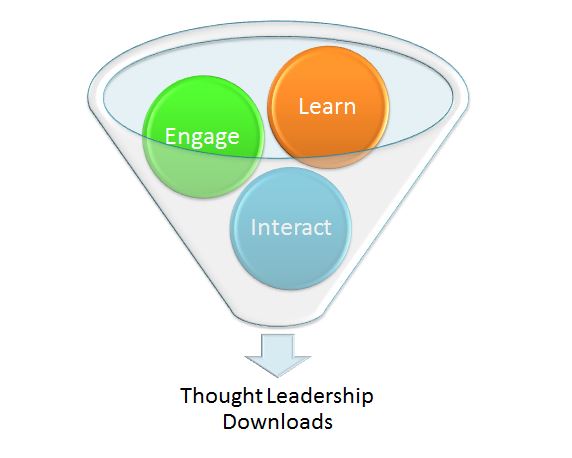SEM For B2B Companies That See No Value In Search
Not every company sees the value of SEM in the B2B space. Companies that only do two or three deals per year based solely on lead nurturing will have no need to rank for keywords or for building site traffic. Selling any website services outside of design to these high-ticket companies may seem impossible because […]
Not every company sees the value of SEM in the B2B space. Companies that only do two or three deals per year based solely on lead nurturing will have no need to rank for keywords or for building site traffic. Selling any website services outside of design to these high-ticket companies may seem impossible because they only use the site for branding purposes.
But there are some SEM tactics that are worth selling. There is still a need for analytics, SEO and conversion optimization for these types of clients; however, the strategy is completely different from normal SEM tactics because users are arriving at the site to obtain information only rather than convert into customers after obtaining information.

Conversion Funnel For A B2B Branding Website
Search Engine Optimization
If keywords and traffic are not important, you may ask yourself what the purpose of SEO would be. Maintaining a technically sound site and improving brand identity is still important no matter what type of site it is. I have seen many instances where larger companies have dozens of different divisions that cannibalize each other in search for branded terms because they don’t differentiate their pages enough.
Search snippets should be optimized purely for branded search and improving user experiences. Include the brand name in the title tag and meta descriptions. Also add the name of the company’s division, if applicable. The title tag should also include a brief phrase that is descriptive of the page’s content, and the description should be descriptive of what the page is about so users know which page to click on when doing a branded search. URLs should also follow the navigational hierarchy and be descriptive of the content.
SEO and website maintenance go hand-in-hand. Just about any site maintenance task has an impact on SEO, but Web developers are generally more focused on working on the site rather than monitoring it.
Site issues like broken links, JavaScript errors, broken images, slow page loading speeds, and setting up 301 redirects are important for every website. Other issues like proper content hierarchy and strong internal linking structures are also important for companies that don’t care about search because it improves usability. The primary focus of SEO should be placed on resolving these issues as they come up since keywords and links are not a primary focus like they would be in normal campaigns.
Analytics Measurement
Site traffic may not be an important factor for these sites, but the sites still do serve a purpose, and measuring the success of achieving those purposes is still important. The users on the site most likely are not prospective clients, but they may be clients of current clients.
Tracking thought leadership downloads, engagement on key pages and user behavior are important metrics to monitor no matter what type of site it is. Tracking downloads on thought leadership and other assets can help influence decisions on future asset creation as well as ensuring users are finding the information they need.
Examining how effectively users are engaging with the content is also important to ensure that the company message is being delivered effectively to the user. User behavior metrics will also help influence changes to the site to make sure users are following the intended flow of the website.
Conversion Optimization
Or better put, usability optimization. Although conversions are not a goal of these sites, usability is still important. Usability optimization works exactly like conversion optimization, but the goal is to improve user experiences only.
Setting up heat mapping software and recording enough data to draw conclusions is the first step in optimizing user experiences. Once you have enough data, map out a desired user behavior flow that encompasses user personas being connected to the content that’s important to them.
Identify the key elements of a page you want users to engage in. Using heat maps, compare your desired behavior map to how users are actually interacting with the site. This will help uncover weak points in page layouts and design, and help you determine what to A/B test.
Since traffic is less important, there may not be enough of it to run successful A/B tests. But since search also is not important, there would also be no harm in running tests longer than anyone would normally run a test.
Using the conclusions drawn from data, start with A/B testing the least performing, highest impact elements first. Only test one element per page at a time to make sure results don’t conflict with other tests. A good focus for these tests would be more user attention on content, and increasing the likelihood users will download assets and thought leadership.
A lot of pure branding sites like these also tend to be design-heavy because companies are more interested in the “wow factor” than getting people to fill out a form or call them. Heat mapping and A/B testing will help build the bridge between a site that is both design-heavy and engages users in the content.
Selling SEM To Branding Clients
Now that you know how this type of SEM campaign is done, selling it into clients is the next challenge. Packaging it up as search engine marketing or site optimization will result in an immediate rejection because the client will not understand the value.
To sell it in, bundle it up as one package with a name geared toward improvement or performance rather than optimization. You will also need to communicate the goal of the service as improving user experiences, connecting people to the brand and performing website maintenance. This is still a tough sell for branding clients, but it’s a way to build the client’s interest in the site and invest more resources in the future.
Contributing authors are invited to create content for Search Engine Land and are chosen for their expertise and contribution to the search community. Our contributors work under the oversight of the editorial staff and contributions are checked for quality and relevance to our readers. Search Engine Land is owned by Semrush. Contributor was not asked to make any direct or indirect mentions of Semrush. The opinions they express are their own.


